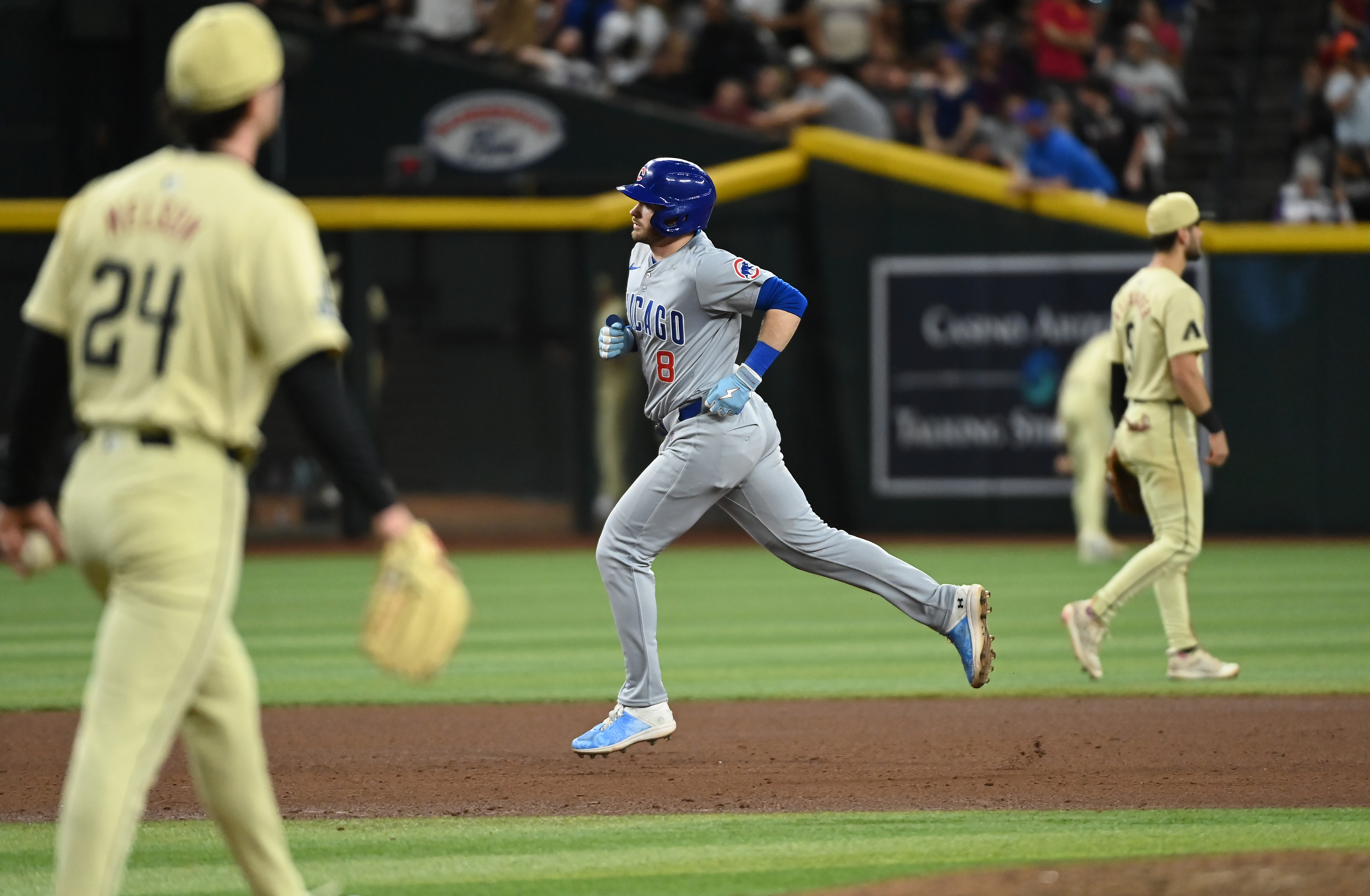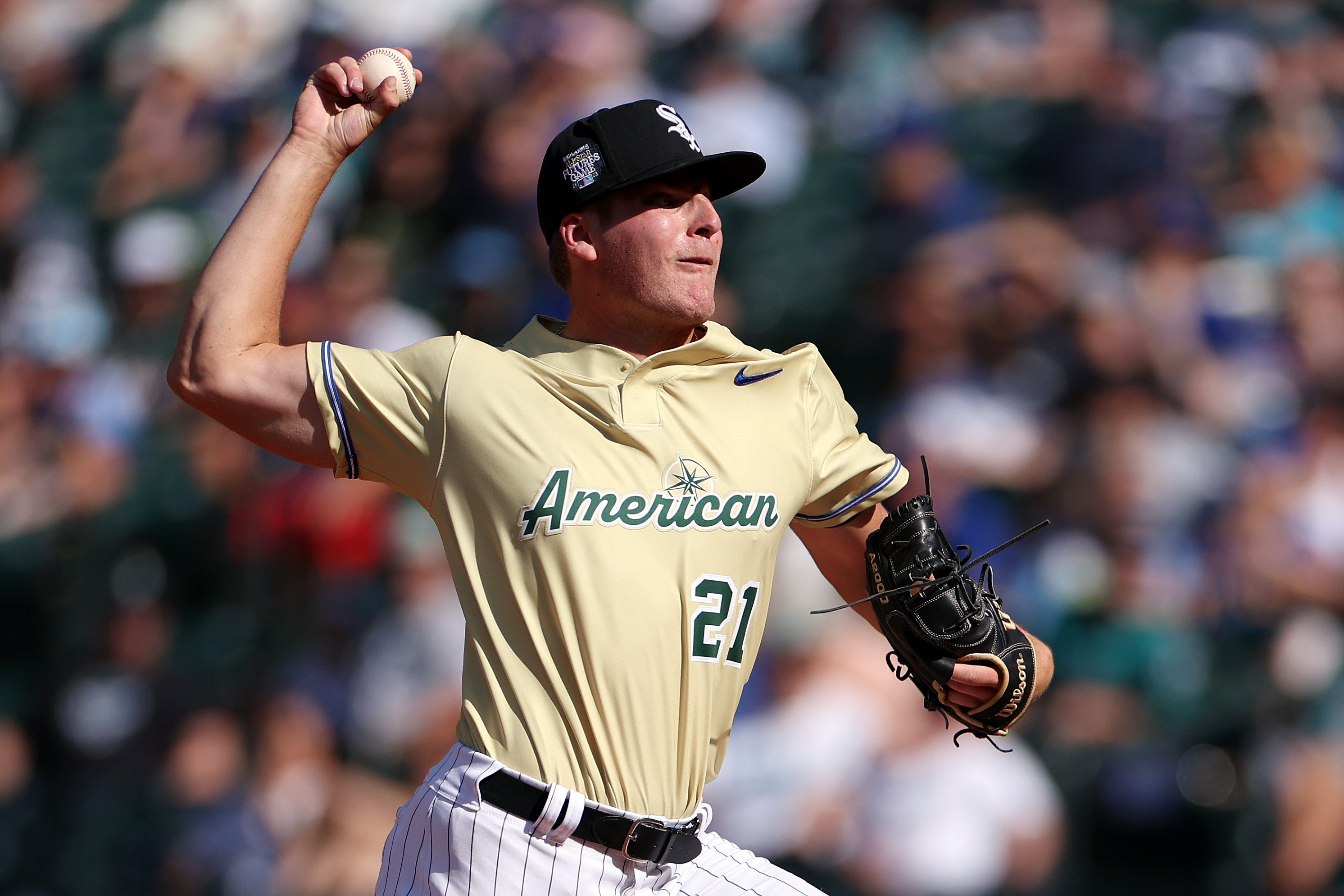
Why have you been so durable throughout your career?
Jon Lester listened to that question after the Cubs revealed their $155 million lefty had been dealing with a “dead arm” in spring training. He shrugged his shoulders and paused for a few seconds, searching for an answer he couldn’t find.
“I don’t know,” Lester said at least four times. “Luck?”
Lester is obviously better than what he’s shown Cubs fans in April (0-2, 6.23 ERA), and he will get a chance to prove that on Friday afternoon at Wrigley Field against the Milwaukee Brewers.
[RELATED - Chris Coghlan brings unique perspective to Cubs youth movement]
The bigger issue is how a 31-year-old pitcher holds up across the next six seasons. The Cubs went into this with their eyes wide open, betting Lester would age gracefully and become their version of Andy Pettitte.
Remember how the Cubs planned an entire offseason around waiting for Masahiro Tanaka, only to have the New York Yankees blow them away with a $175 million investment?
MLB
Well, the Yankees put Tanaka on the disabled list this week with a strained right forearm and tendinitis in his right wrist – after shutting him down last season with a partially torn ulnar collateral ligament in his right elbow, the kind of injury that usually signals Tommy John surgery.
Texas Rangers ace Yu Darvish – another Japanese pitcher the Cubs once bid on – is already recovering from his Tommy John surgery. The Philadelphia Phillies don’t know if Cliff Lee’s left elbow will allow the Cy Young Award winner to throw another pitch again. One season into a six-year, $105 million contract, the Cincinnati Reds aren’t sure if Homer Bailey will need the Tommy John procedure.
[MORE - GM Jed Hoyer hopes Cubs will become buyers]
If Theo Epstein isn’t numb to that kind of news by now, the Cubs president of baseball operations certainly understands the odds and realizes no one is immune to the epidemic.
“You know it going in,” Epstein said. “That’s why we just kind of curse ourselves up and down for even considering big money on free-agent pitchers at the beginning of every offseason. Because you know the injury risk and you don’t want to do it. But at some point you kind of have to.
“If you don’t want to bet on first-round pitchers, because the position players are a safe bet, and you don’t want to bet on young pitchers as the headliners in trades because you can get guys like Addison Russell back, then you can’t sit there and hold your nose on free-agent pitching and say no.
“You’ll end up with no pitching. You have to do it one way or the other. I will say this: The worst part of the job is the fear of the phone ringing and it being a trainer with franchise-altering news about one of your pitchers. That (bleeping) sucks living with that every day. But it’s part of the game. It’s the same for everybody.”
The Cubs bet on Lester because they understood his personality, medical history, work ethic and family values through all their Boston Red Sox connections. It’s hard to argue with the track record: 30-plus starts in each of the last seven seasons, and at least 200 innings every year except for 2011, when he threw 191.2.
“The kid answers the bell every five days,” Cleveland Indians manager Terry Francona said. “He keeps himself in phenomenal shape. Loves to pitch. It’s scary, I think, for teams to give away that kind of money. But…I’d have a hard time finding somebody you would (rather) give it to. He’s phenomenal in just about every aspect of everything he does.”
[RELATED - This is what Starlin Castro has been waiting for with Cubs]
Francona grew close to Lester while managing the Red Sox amid all the drama at Fenway Park. Lester got the cancer diagnosis during the 2006 season, beat anaplastic large cell lymphoma and then won the clinching game of the 2007 World Series against the Colorado Rockies at Coors Field.
The Cubs got Russell in the Fourth of July deal for Jeff Samardzija, who immediately noticed Lester’s consistency when the rental pitcher joined the Oakland A’s after a deadline trade from Boston.
“The dude’s a horse,” said Samardzija, now pitching for the White Sox in his walk year and expecting to sign his own nine-figure contract. “You look in this league, there are 30, 40 horses out there that you write a check for.
“You just close your eyes, because you know that no matter what amount you pay ‘em, they’re going to go do their job and it’s going to be a good investment. If I was an owner, the No. 1 thing that I would want is wherever I spend my money, when it’s all said and done, I was happy who I gave it to and how it was spent.
“I think they’re going to be very happy with what they get out of Jonny. He’s not going to shut it down. He’s not going to be content. And I think that’s what it’s all about, being that same guy you were when you were a rookie.”
Lester is obsessive with his routine, trying to throw the exact same bullpen sessions and warm-up pitches, whether it’s preparing for a minor-league scrimmage or the World Series.
Otherwise, Lester thinks, the emotions would get out of control. That tunnel vision has probably helped him stay healthy, though it doesn’t completely explain or guarantee his durability.
[SHOP: Gear up, Cubs fans]
“We all have things that we deal with through the season that come up,” Lester said. “I’ve been fortunate enough to kind of, I guess, minimize those things to where I’m still able to pitch.
“If I had an answer, I could give it to guys that struggle with being healthy. But I don’t (have an answer). I just try to (go for) as many starts as I can. That’s all I try to worry about.”
It hasn’t been the first impression the Cubs wanted, but the last word will belong to Lester, who has a career 2.57 ERA in 84 postseason innings and those two World Series rings from the Red Sox.
“Some guys start fast and finish terrible,” Lester said. “Other guys start slow and finish good. So I’d rather be the latter. That’s what you play for – the end of the year.”


